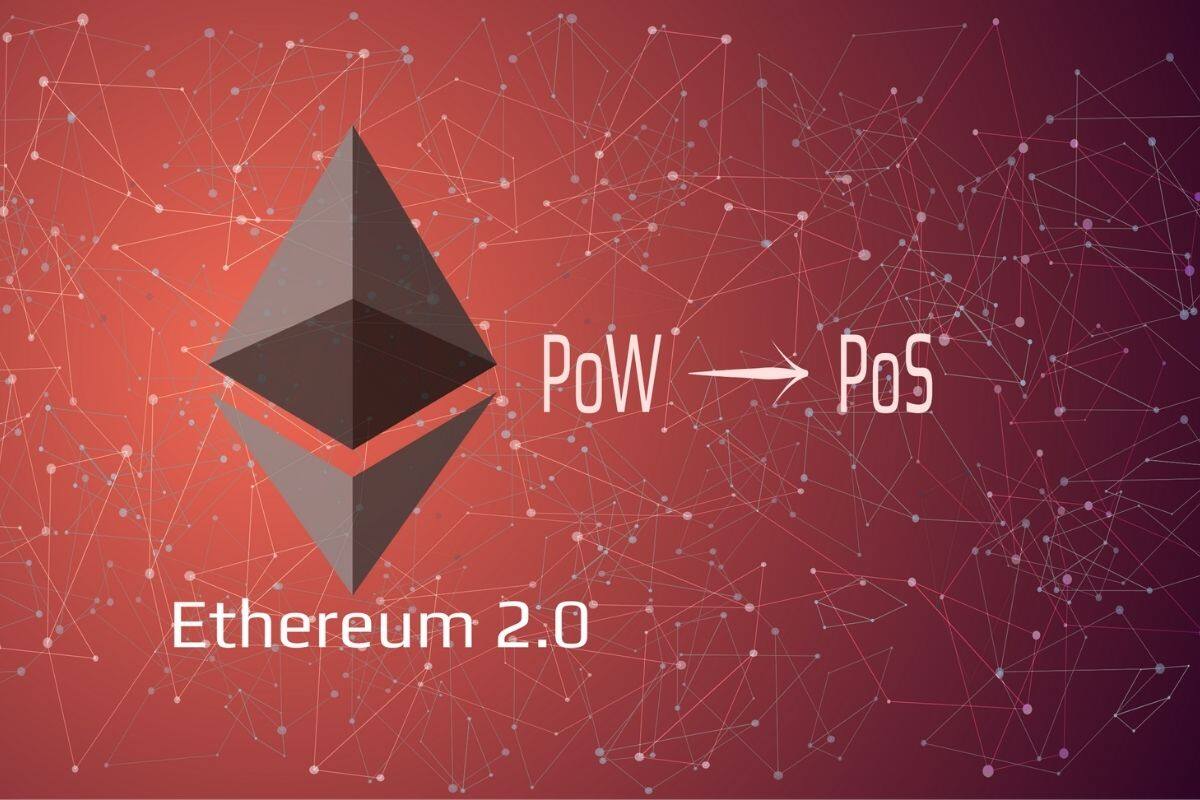On July 30, 2025, Ethereum celebrated a historic moment marking its tenth anniversary. Since its founding in 2015 by Vitalik Buterin and others, Ethereum has evolved from an experimental project carrying an idealistic vision into a global platform driving decentralized economy and culture. It not only pioneered smart contracts but also nurtured decentralized finance (DeFi), non-fungible tokens (NFTs), and decentralized autonomous organizations (DAOs), profoundly changing the landscape of the blockchain industry. This decade-long journey has been filled with breakthroughs and controversies, with Ethereum's influence on technology, community, and culture being unparalleled.
From Vision to Reality: Ethereum's Ten-Year Journey
The birth of Ethereum stemmed from a reimagining of blockchain's potential. In 2013, young genius Vitalik Buterin published the Ethereum white paper, proposing a bold idea: to create a "world computer" that would allow developers to build any decentralized applications (DApps) on the blockchain through Turing-complete smart contracts. On July 30, 2015, the Ethereum mainnet officially launched, marking the transition of blockchain from Bitcoin's singular currency function to a platform era. This innovation provided developers with limitless possibilities, enabling decentralized financial protocols and digital art markets to flourish within Ethereum's framework. In its early days, the price of Ether (ETH) was negligible, but its technological vision attracted developers worldwide, laying the foundation for ecological prosperity.
Ethereum's growth was not without challenges. The DAO incident in 2016 became a significant turning point in its history. A decentralized investment fund called "The DAO" was hacked due to a code vulnerability, resulting in a loss of approximately $60 million worth of Ether. The community faced a dilemma: should they modify the blockchain history through a hard fork to recover the losses? This was not only a technical crisis but also a test of the principle of "decentralization."

Ultimately, Ethereum chose to hard fork, restoring the stolen funds, but this decision led to a split in the community, with a minority of dissenters creating Ethereum Classic (ETC). The DAO incident exposed the security risks of smart contracts but also propelled Ethereum's maturity in governance and code auditing, prompting the community to place greater emphasis on the balance between technology and ethics.
From 2017 to 2018, Ethereum experienced a surge in initial coin offerings (ICOs). Based on Ethereum's ERC-20 standard, thousands of projects rapidly raised funds by issuing tokens, driving up the price of Ether, which peaked at around $1,400 in early 2018.

The ICO boom sparked a wave of blockchain entrepreneurship but also brought about bubbles and chaos, with many projects failing due to a lack of real value, attracting the attention of regulators. Nevertheless, the ICO boom proved Ethereum's potential as an innovative platform, laying the groundwork for the subsequent DeFi and NFT waves.
The year 2020 became a breakout year for the Ethereum ecosystem. Decentralized finance (DeFi) protocols like Uniswap, Compound, and Aave leveraged Ethereum's composability to build a financial ecosystem without intermediaries, encompassing lending, trading, and derivatives, with total locked value once exceeding $100 billion.

At the same time, non-fungible tokens (NFTs) ignited a revolution in digital art and collectibles, with projects like CryptoPunks and Bored Ape Yacht Club sweeping the globe through Ethereum's ERC-721 standard, and markets like OpenSea reaching transaction volumes in the billions of dollars. Ethereum transformed from merely a technical platform into a symbol of Web 3 culture, attracting widespread participation from artists, creators, and everyday users.
The "Merge" in 2022 was the most significant upgrade in Ethereum's technical history. Previously, Ethereum relied on a proof-of-work (PoW) mechanism, which consumed vast amounts of energy and faced environmental criticism. The Merge transitioned Ethereum to a proof-of-stake (PoS) model, reducing energy consumption by 99.95%, establishing it as a benchmark for sustainable blockchain development.

This transformation not only addressed external concerns about the environmental impact of blockchain but also laid the groundwork for future scalability upgrades, such as sharding. From 2023 to 2024, Ethereum further optimized Layer 2 solutions like Optimism and Arbitrum through the Dencun upgrade, significantly lowering transaction costs and enhancing user experience. These technological advancements solidified Ethereum's leadership position in the blockchain industry.
Current Challenges: The Crossroads of Competition, Scalability, and Regulation
Despite Ethereum's tremendous success, it still faces multiple challenges that test the resilience and adaptability of its ecosystem. First, scalability remains a core bottleneck. The throughput of the Ethereum main chain is only 15-30 transactions per second, far below traditional financial systems (like Visa's thousands of TPS). Although Layer 2 solutions have significantly reduced gas fees by transferring transaction processing to side chains through Rollups technology, the complexity of cross-layer transactions and user experience still need improvement. Additionally, the degree of decentralization and data availability issues of Layer 2 have sparked community debates. For instance, some Rollups rely on centralized sequencers, which may undermine Ethereum's commitment to decentralization. Balancing performance with security and decentralization is a pressing technical challenge for Ethereum.
Competitive pressure is another challenge that cannot be ignored. In recent years, high-performance public chains like Solana, BNB Chain, and Polkadot have rapidly emerged. Solana has attracted numerous NFT and GameFi projects with its thousands of transactions per second throughput, while BNB Chain has carved out a niche in the DeFi space with low costs and high speed. These emerging public chains pose a threat to Ethereum in attracting developers and users. Although Ethereum has the largest developer community and the most mature ecosystem, its high gas fees and complex technical stack may deter newcomers. Ethereum needs to respond to competition through technological innovation and ecosystem integration while maintaining its decentralization principles.
Regulatory uncertainty casts a shadow over Ethereum's future. The transition to PoS brings Ether closer to the traditional financial definition of "securities," potentially facing strict scrutiny from agencies like the U.S. SEC. Compliance issues surrounding DeFi protocols and NFT markets have also become regulatory focal points. For example, certain countries' KYC (Know Your Customer) requirements for decentralized exchanges may limit Ethereum's global expansion. Furthermore, regulatory differences across regions could lead to ecosystem fragmentation, affecting the development and deployment of cross-border applications. The Ethereum community needs to find a balance between technological innovation and policy communication to navigate the complex regulatory environment.
The complexity of community governance is also worth noting. Ethereum's decentralized governance relies on community consensus, but the decision-making influence of core developers and the Ethereum Foundation often sparks controversy. For instance, the EIP-1559 proposal in 2021 introduced a gas fee burning mechanism that optimized Ethereum's economic model, but some miners opposed it due to reduced income. In the future, balancing the interests of developers, miners (now validators), users, and enterprises to ensure fairness and transparency in governance will be a long-term challenge for the Ethereum community.
The Next Decade: Ethereum's Vision and Path
Looking ahead, Ethereum's next decade will focus on scalability, privacy, interoperability, and mainstream adoption, aiming to solidify its position as the cornerstone of Web 3. In terms of scalability, Ethereum's long-term roadmap centers on the combination of sharding and Rollups. Sharding will split the Ethereum main chain into 64 parallel shards, theoretically increasing throughput to 100,000 transactions per second. Layer 2 technologies like zk-Rollups and Optimistic Rollups will continue to optimize costs and performance. For example, zk-Rollups compress transaction data through zero-knowledge proofs, reducing gas fees while enhancing privacy. From 2025 to 2030, the deep integration of sharding and Rollups is expected to make Ethereum a high-performance decentralized platform, rivaling the efficiency of traditional internet.
Privacy protection will be another key focus for Ethereum's future development. Zero-knowledge proof (ZKP) technologies, such as zk-SNARKs and zk-STARKs, are being widely applied within the Ethereum ecosystem. ZKPs can not only hide transaction details to protect user privacy but also enhance efficiency through batch verification. For instance, ZKP-based Layer 2 solutions like StarkNet have already shown promising results. In the future, Ethereum may natively support privacy features at the protocol level, attracting enterprises and users sensitive to data security, and promoting blockchain applications in finance, healthcare, and identity verification.
Cross-chain interoperability is a core issue in the multi-chain era. With the rise of public chains like Solana and Polkadot, the blockchain ecosystem is becoming fragmented. Ethereum needs to strengthen its connections with other chains through cross-chain bridges (like Wormhole and LayerZero) and interoperability protocols to achieve seamless asset and data flow. For example, future Ethereum may collaborate with Polkadot's XCM protocol to build cross-chain DApps, reinforcing its position as a hub of Web 3. Additionally, technologies like Cosmos's IBC protocol and Chainlink's CCIP may inject new vitality into the Ethereum ecosystem.
Optimizing user experience will be key to Ethereum's mainstream adoption. Currently, high gas fees and complex wallet operations (like private key management) remain barriers for ordinary users entering Web 3. The Ethereum community is working to simplify processes through account abstraction (EIP-4337) and social recovery wallets. For instance, account abstraction allows users to utilize smart contract wallets, supporting more flexible payment methods, such as social media account logins or biometric verification. Furthermore, the rise of GameFi, social DApps, and metaverse applications will attract mainstream users, driving Ethereum's transformation from a technical platform to a consumer-grade product.
Sustainable development and social impact will also be focal points for the next decade. The PoS transition has made Ethereum a model for environmentally friendly blockchains, and it may further fund public goods, such as open-source development and academic research. The Ethereum Foundation's grant programs have already supported hundreds of projects covering decentralized identity (DID), voting systems, and climate change solutions. For example, Ethereum-based DID systems could reshape digital identity management, allowing users to truly control their personal data. Decentralized voting could provide a new paradigm for democratic governance, enhancing social trust.
免责声明:本文章仅代表作者个人观点,不代表本平台的立场和观点。本文章仅供信息分享,不构成对任何人的任何投资建议。用户与作者之间的任何争议,与本平台无关。如网页中刊载的文章或图片涉及侵权,请提供相关的权利证明和身份证明发送邮件到support@aicoin.com,本平台相关工作人员将会进行核查。



